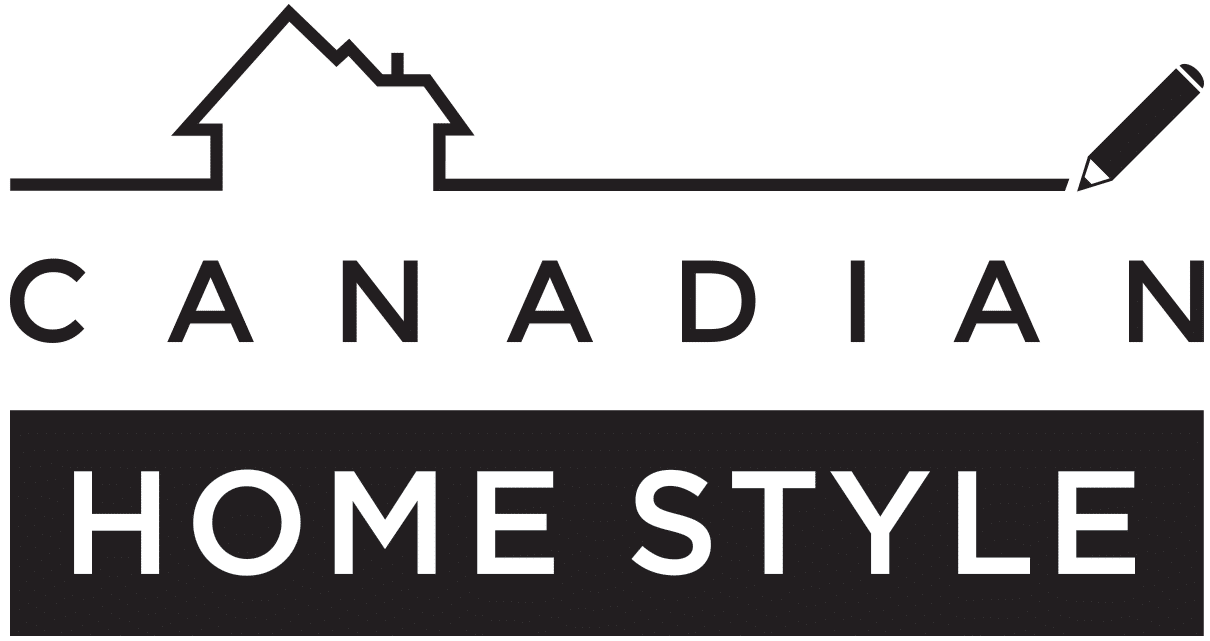Choosing The Best Hardwood Flooring In Vancouver
There’s nothing like real wood. Hardwood floors are your best bet for your next home improvement project for all homeowners looking for a new flooring option. They’re durable and beautiful but require upkeep over time to keep them in top condition. This article covers everything you need to know about selecting the perfect hardwood flooring for your space from some of the top flooring pros in the industry!

First of all, what is hardwood flooring?
Hardwood flooring is the most beautiful and widely used flooring type in Canada. Hardwood flooring is harvested from trees that grow much slower, making the material denser and more durable than its softwood counterparts. With more durability, less maintenance is required, and you will get high-quality use.
What are the benefits of hardwood flooring?
You may ask yourself, “Why to bother installing hardwood flooring?” Well, some key benefits of having hardwood flooring installed are that it has an ageless quality, a high-quality natural look to it, it helps provide healthier indoor air quality, and of course, it is super easy to clean.
The exquisite design options, colours, and textures provide a significant natural feeling in one’s home. Those are just some of the benefits of having a hardwood floor.
What are the disadvantages of wood flooring?
Many people would say that one disadvantage is cost, but many consider this a false belief because installing new hardwood flooring will save you money in the long run. Another disadvantage is that it can be more difficult to install and maintain than carpeting or vinyl flooring, but this also depends on the type of hardwood flooring you choose.
Find out what dictates the price of hardwood flooring so you can make the right decision when shopping for the best hardwood flooring.
Why should I choose hardwood flooring?
Some reasons one may choose to install hardwood flooring include:
Added value to your home – Great Investment
Hardwood flooring is one of the most common “must-haves” for potential home buyers. Upgrading your wall-to-wall carpet to an upscale hardwood floor can make it easier to sell your home when the time comes and significantly increase your home’s value. This can be a great long-term investment for you while living in the house and even later when looking to sell it.
Longer Lasting
A good quality wood floor can last a lifetime and remains in good condition. Unlike carpet, which is recommended to be replaced every 8-10 years. All-natural wood hardwood floorings should last 100 years or even more. Thirty years should be the minimum length you can expect from your hardwood floors.
Much Easier to Clean
Wood flooring needs minimal maintenance. Hardwoods are super easy to clean, especially compared to carpet. Hardwood flooring is the perfect solution if you have kids, pets, and heavy foot traffic constantly leaving tracks of dirt and mud all over the carpet or causing stains everywhere. Wood floors do not harbour stains and odours the same way carpets do. For example, if you, your child, a pet, or a guest spills juice all over the floor, what would have been a long clean-up process if you had carpet, instantly becomes a simple clean-up with hardwood floors. All you need to do is clean up the liquid immediately, and as long as you ensure it is dried well, you will not see any stains or damage to the hardwood.
Natural Beauty
There is something to be said about the natural aesthetic value wood flooring adds to your home. There’s nothing like it! Not only does the wood add a certain beauty to your home, but it also comes in many different types and colours and can always be adjusted to fit your preferred taste and style.
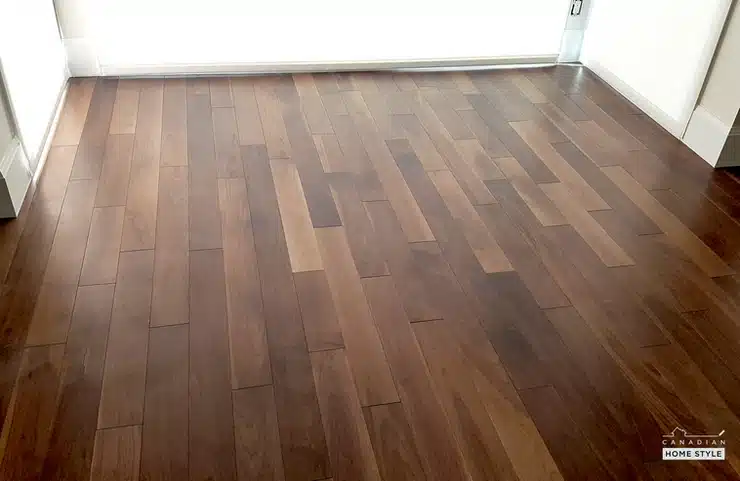
Now that you have a better sense of what hardwood flooring is and what some benefits are, I will review the main factors to consider while choosing your hardwood floor.
Although it is exciting seeing how many different beautiful colours and designs are available, it can also be overwhelming trying to pick out the best choice possible. Below, I have listed a step-by-step tutorial to help you pick out the best hardwood floor option for your home.
STEP 1 – Create A Reasonable Budget
Before anything else, I would recommend that you first take the time to come up with a reasonable budget that works for you. You must ask yourself how much money you will spend on this project. Depending on the type, installing a hardwood floor will typically cost you anywhere from $9.00 to $30.00 per square foot supply and Installation. You must devise a budget that works for you and do your best to stick to it.
STEP 2 – Select Hardwood Floor Type
There are two main wood types to choose from solid hardwood and engineered hardwood. Due to our environmental factors such as humidity and style preferences, the most popular wood type in Vancouver is Engineered.
Solid hardwood floors – Single piece
Solid hardwood is solid wood all through and generally ¾” in thickness. Unlike solid hardwood, engineered hardwood is done in layers, with the top layer being hardwood and lying underneath are layers of wood to give additional stability to the overall structure.
One major advantage to getting solid wood flooring is that it can be sanded and refinished at least three times. So if you’re in the market to change your floor colour more frequently or have scratches on your floor, solid hardwood enables you to refinish it to your liking. Engineered hardwood can also be sanded. However, your top wear layer should be thick enough to do so, and you can sand and refinish it up to two times maximum, depending on the wear layer as mentioned. In addition, if you’re planning on sanding and refinishing your wood floor in the future, you must staple or glue it down. Typically engineered floors are floated on the subfloor with a proper underlay underneath. Floating floors will not be able to be sanded and refinished.
Engineered hardwood flooring – Popular choice
Engineered wood flooring is more dimensionally stable to humidity and temperature changes. One reason someone may choose engineered hardwood is that the installation process is far easier and more flexible. You can only nail down a solid hardwood to your plywood subfloor above grade. However, you get to choose your type of installation regarding engineered products. These floors can be floated, stapled (similar to nail down), and glued to the subfloor. Therefore, you can install them where installing solid hardwood is not an option, such as in basements and condos with concrete subfloors. Another advantage of engineered hardwood is the fact that the stability of the core allows the manufacturers to offer wider planks. You typically can go up to a maximum of four and a half-inch width with solid hardwood, but you can go up to nine inches wide with your engineered product. Especially on the West Coast and in Lower Mainland, that’s our preferred look. Wider boards tend to make your home more spacious.
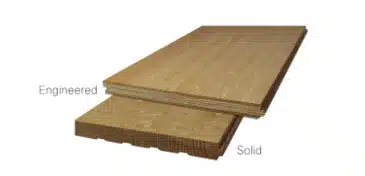
Solid Hardwood versus Engineered Hardwood Flooring
STEP 3 – Select Tree Material Type
There are several different options to choose from. The more popular types include oak, maple, walnut, Brazilian cherry, hickory, maple, and American walnut.
To help decide which wood type to choose, you may want to think of which style best fits with the colours or style of your house, consider the different designs each type has, and find the one you like best.
Species – Hardness
- Hickory, Pecan 1,820
- Hard Maple 1,450
- White Oak 1,360
- Beech 1,300
- Red Oak 1,290
- Yellow Birch 1,260
- Green Ash 1,200
- Black Walnut 1,010
- Soft Maple 950
- Cherry 950
We use the Janka hardness scale to measure the hardness of a wood species. The Janka Rating measures how much force is required to embed a one-inch-width steel ball into the surface with an impact velocity of 353 inches per second. It considers the density, moisture content, and grain direction in which that blast was applied. Janka rating is the most common way to measure the hardness of a wood species. It was developed over 100 years ago by J.A. Janka, one of the first to explore the mechanics of lumber failure and the study of strength properties in wood. Exotic woods have high Janka ratings on the Janka scale and are extremely hard.
It’s also worth mentioning that the application will also dictate what you can and cannot use when picking your hardwood floor species. For example, Hickory is not suitable for radiant heated floors, and most manufacturers will not warranty their Hickory products on radiant heating systems. Oak is the preferred species when one considers installing hardwood on this heating system.
Although hardwood floors are generally durable, if you have small kids, pets, or heavy foot traffic, you may want to consider choosing a harder type of wood such as maple or hickory. The harder the wood type, the more durable it will be. In addition, you may consider brushed or hand-scraped styles that hide scratches a bit more.
Below is an image displaying some of the different wood types you can choose from:
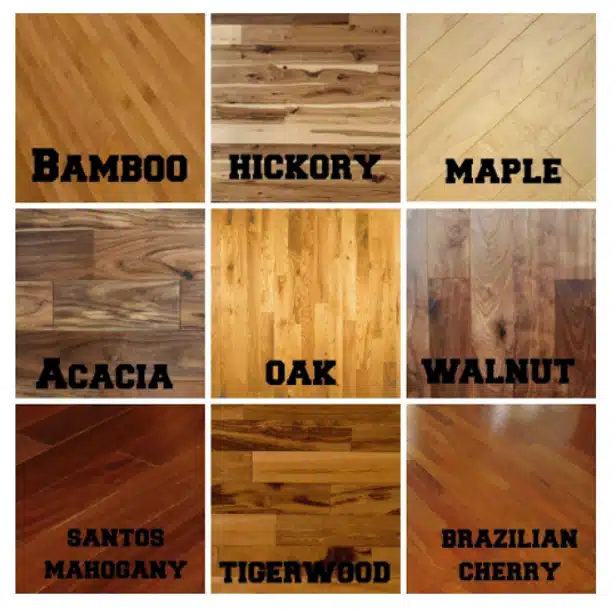
STEP 4 – Select Wood Stain
The most important thing you will want to do is choose a colour that best fits the style of your home, whether that may be a light or dark colour. Remember your hardwood floor is in every room, and you’re in contact with it visually and physically every day.
It can be quite overwhelming to decide which exact colour you want your floor to be, however,
Patrick Bewley, vice president of marketing at California-based flooring brand Duchateau Floors, says, “Our advice is to start by selecting the colour range that is most attractive to you – the one that speaks to you and the space.”
Once you have found one colour that speaks to you and matches well with your home, you may move on to step 5.
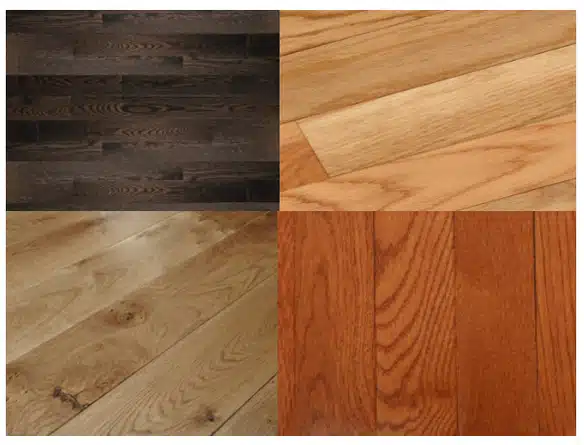
STEP 5 – Choosing the Right Texture
What we mean by texture is whether your surface is smooth, brushed, or hand-scraped. Brushing is an excellent way to add texture and accentuate the natural look of hardwood. However, remember that not all wood species can be easily brushed, and most manufacturers can only offer wire-brushed products in Ash and Oak.

STEP 6 – Choosing the Sheen Level in Your Finish
Finally, you must choose your sheen level. No sheen level is known to be more durable than another, but what you choose will determine how much wear and tear you can see. For example, a matte finish limits the visibility of scratches, scuffs, and dirt, in contrast with a high-gloss finish which reflects more light making the wear and tear more visible.
Depending on your preference, the four most popular types are:
Matte Finish
Matte finish is known for its lack of shine, which is well-liked by some customers that shy away from that brightness. This is, of course, our preferred finish.
Satin Finish
Satin is a more popular chosen finish because it is right in the middle having just the right amount of lustre so that it is shiny but not too shiny. Another added benefit of a Satin finish is that it does not show wear and tear.
Semi-Gloss Finish
Semi-Gloss is similar to Satin. However, it has slightly more shine than Satin does. This type of finish requires more maintenance to keep your floor looking good, but the shine of the gloss tends to bring the beauty out of the floor, which some customers enjoy.
High Gloss Finish
The high gloss finish has the most lustre and is not the right finish for commonly used floors. This finish is usually only used for specialty floors that have minimal traffic, as they show marks easily.
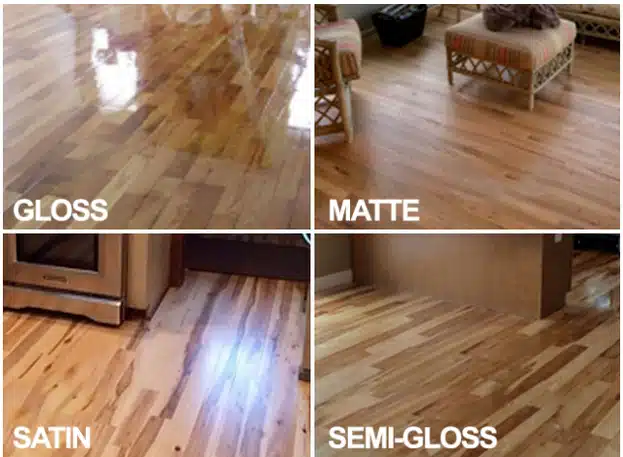
Some of the best-prefinished hardwood flooring brands found in Vancouver:
- Purparket wood flooring
- Mercier wood flooring
- Lauzon wood flooring
- Mirage wood flooring
- Preverco wood flooring
- Torlys wood flooring
- Boen wood flooring
These are all top pre-finished flooring products available in the flooring industry today. These manufacturers are famous for their wide planks and their factory finish.
If you have followed these steps in our buying guide and are ready to install wood flooring in your house in Vancouver, click here to learn more and get started placing a future order.
Professional installation matters!
Canadian Home Style is your family-owned and operated flooring retailer with a showroom in North Vancouver, BC. We provide full-service commercial and residential flooring solutions across the Lower Mainland with an extended warranty. We are proud members of the BC Floor Covering Association (BCFCA) and the National Wood Flooring Association (NWFA). In addition, we have won the Consumer’s Choice Awards back-to-back in 2021 and 2022 for our commitment to business excellence. We are considered the highest-rated flooring experts in Metro Vancouver. We pride ourselves on holding the highest standards in the flooring industry. To uphold our high standards, we have a strict policy of “not selling or displaying any products that we wouldn’t want in our own homes.” Before we select a product to feature, we carefully assess product quality, off-gassing, warranties, and responsible sourcing. Book now to visit our North Vancouver showroom; we can help you choose the perfect floor for your home or business.
Services We Offer:
Main Areas of Service in British Columbia:
- Vancouver
- North Vancouver
- West Vancouver
- Burnaby
- Coquitlam
- Squamish
- Whistler
We at Canadian Home Style love wood and offer the best hardwood floors in Vancouver!
Frequently asked questions:
Does waterproof wood flooring exist?
Yes, recently, water-resistant wood flooring has been introduced to the market.
What’s the good thickness for the wood veneer?
3 mm wood veneer is considered good. Most high-end hardwoods come with a 4 mm lamella.
How much does a good hardwood flooring cost per square foot?
A good product could cost a minimum of $8.00 per square foot.
Is reclaimed wood popular now?
Reclaimed wood is mostly used for traditional-style homes and cabins. The modern designed homes normally don’t feature this type of wood.
Is laminate flooring more anti-scratch than hardwoods?
Laminate flooring is more anti-scratch than your average hardwood flooring. But in terms of overall durability, hardwood has the laminate beat.
What is the most popular wood species?
White Oak
